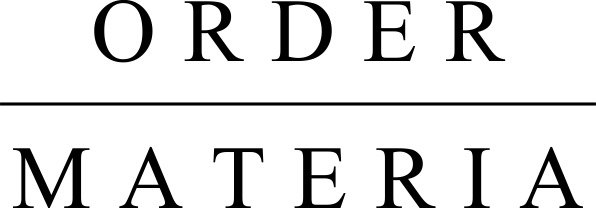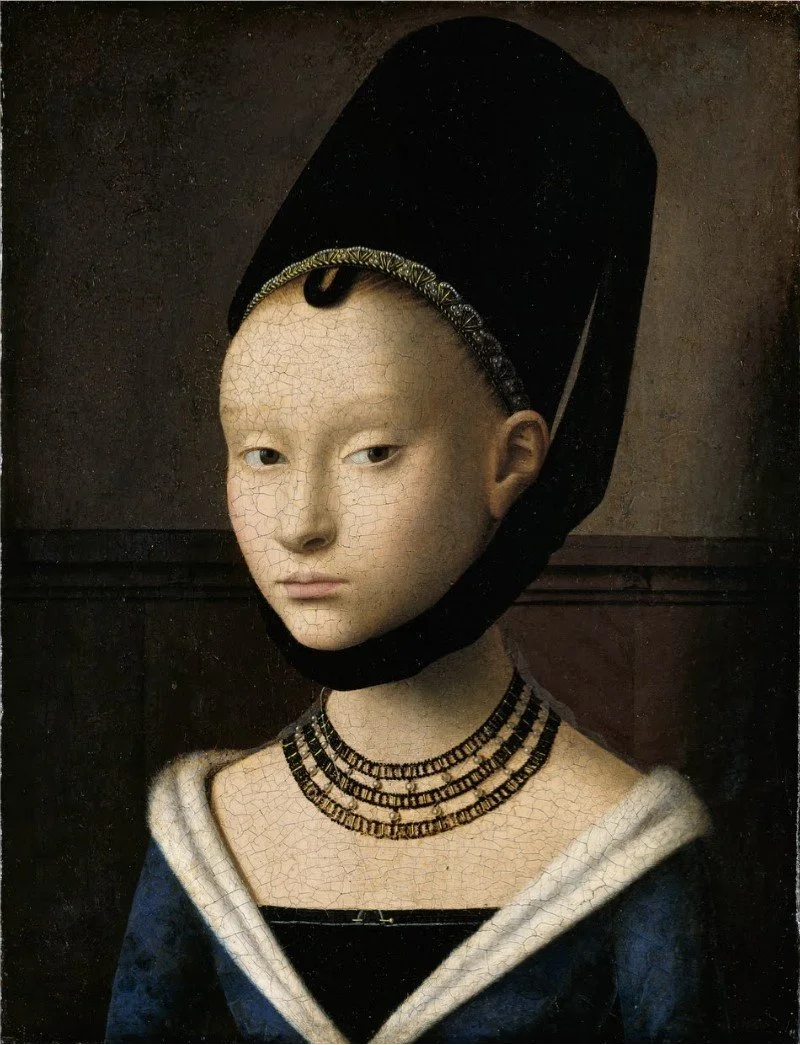The Skinny Brow Trend
Medival Eyebrows -
‘Portrait of a Young Woman’ by Petrus Christus
© http://www.prestel.com, Prestel Verlag / Rainald Grosshans // Photo: © http://www.bpk-images.de, b p k - Photo Agency / Gemäldegalerie, Staatliche Museen zu Berlin / Jörg P. Anders
After a good ten years of groomed bushy brows, skinny brows are making a comeback. The trend has been bubbling for a while on Tik Tok together with a skinny brow app that lets you see how you look with the dramatic brow. Hulu released its controversial Pam & Tommy tv series, with Lily James as Pamela Anderson reminding us of Pamela’s iconic blonde hair and skinny 90s brows. If you think skinny brows are a new thing, think again, it's just their turn on the merry-go-round of eyebrows.
Ancient Egypt
Both men and women wore makeup, so thick eyebrows were desirable as Egyptians believed the face was sacred. The Egyptian god Horus had dark thick pronounced eyebrows that drew attention to his eyes, so Egyptians followed suit using black carbon paint and a black oxide substance to make them more prominent, think Cleopatra.
Ancient Greeks and Romans
Ancient Greek and Roman culture valued women’s purity, so natural, unkempt eyebrows were desirable. Women with a unibrow were seen as beautiful and intelligent and those that didn’t have a natural unibrow used paint to have one.
Middle Ages
During the Middle Ages, the forehead was the focal point of a woman’s face, this defined their beauty, so eyebrows were severely plucked.
During Elizabethan times women dyed their brows a reddish-blonde colour in homage to Queen Elizabeth who was strawberry-blonde.
1920s
Eyebrows in film were a statement of the era. The roaring 20s were a time of flappers, jazz, liquor, consumerism and liberated women. It was the first time that commercially made beauty products were made. At the end of WW1 white women had the right to vote. Women were empowered to express themselves. Cinema became widespread entertainment and movie stars became everything, including their eyebrows.
Brows were severely plucked or shaved, then pencilled into thin, straight, extended lines. Films were silent, so eyebrows were dramatic expressing emotions to the audience.
Famous eyebrows of that time belonged to Anna May Wong, who had mega extended brows, Josephine Baker and Clara Bow.
1930s
The brows of the 30s were similar to those in the 20s, still thin, but now with an exaggerated arch. Oils and petroleum jelly were used to make them shiny. Women copied the brows of Greta Garbo, Jean Harlow and Marlene Dietrich.
1940s
War brought rationing and women worked in male industries. Having less time to spend on beauty, women now had a low-maintenance look. Brows were medium to thick, natural and still with a prominent arch.
Women copied actresses like Lauren Bacall, Lena Horne and Ava Gardner.
1950s
Women in the 50s wore lots of make-up. Their brows were thick, immaculately shaped with a high arch. Women copied stars of the time like Audrey Hepburn, Elizabeth Taylor and Marilyn Monroe.
1960s
Thin minimal brows like those in the Middle ages returned in the 60s. Brows were heavily plucked or shaved off and pencilled in for a bold look. Sophia Loren had the most recognisable eyebrows of the decade. They were shaved off and pencilled with short thin strokes.
1970s
The hippy movement was in full swing. Natural, unkempt brows were once again popular. Ali McGraw and Lauren Hutton were celebrities of the time that had natural brows that were copied.
1980s
The 70s brow continued into the 80s. Think Madonna and Brooke Shields.
1990s
Here we go again with the over-plucked brows. Actresses Pamela Anderson and Drew Barrymore defined the look. Kate Moss was all over Vogue brandishing her super thin brows.
2000s
The bold plucked eyebrows of the 80s became more refined and bold. Thick brows were once again in fashion.
2010s
During this time brows are plucked and makeup is used to obtain perfectly shaped brows. Eyebrows are bold and elegant with a softer look, using pencils, gels, waxing, threading and microblading.
2020s
Eyebrow styles are constantly changing, and here we go again……
time for thin brows.

